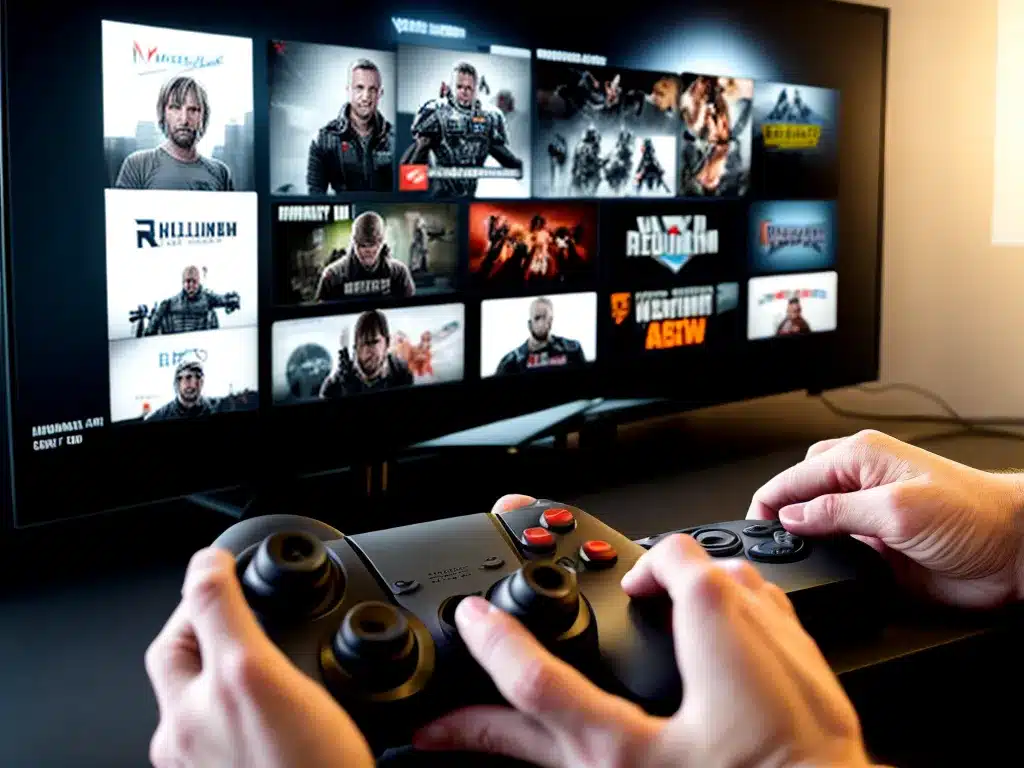
Introduction
Gaming has evolved from sitting in front of a TV with a console to playing games anywhere in your home over a local network. With in-home game streaming, I can play games on any device in my house while the game actually runs on a powerful gaming PC or console. This allows me to access my full gaming library from a phone, tablet, laptop, or TV without needing the horsepower locally. However, game streaming over a home network comes with challenges. Getting a smooth, lag-free gaming experience requires optimizing my network setup and settings. In this article, I’ll provide tips for improving in-home game streaming performance based on my experience.
Upgrade to a Gigabit Router
The most impactful upgrade I made was switching to a router with gigabit Wi-Fi capability. Older routers often max out at 300 Mbps while gigabit routers support speed up to 1000 Mbps. Game streaming needs fast, low latency network speeds to minimize lag, freezes, and compression artifacts.
With a gigabit router, I can stream games at 1080p 60fps or even 4K without performance issues. The router model isn’t as important as having support for the latest Wi-Fi standards. I recommend looking for an AC1900 or AX router for optimal wireless throughput. Wirecutter provides great router recommendations here.
Connect Devices via Ethernet When Possible
For devices like a gaming PC, game console, or streaming box, use an Ethernet connection rather than Wi-Fi if possible. Ethernet offers faster speeds and lower latency since it doesn’t have to deal with wireless interference.
I use Ethernet for my main gaming PC and Nvidia Shield streamer. The wired backhaul helps reduce bottlenecks, keeping the full gigabit speeds available for devices on Wi-Fi. Ethernet cables are inexpensive – grab some CAT 5e or CAT 6 cables.
Tweak Quality of Service (QoS) Settings
Most routers have Quality of Service or QoS settings to prioritize traffic for certain devices. This ensures critical network traffic like gaming gets through without delay.
I configure my router to prioritize traffic from my gaming PC. Some routers even have presets for optimizing gaming traffic. Refer to your router admin page for instructions on tweaking QoS settings. Just avoid going overboard since starving other devices of bandwidth can backfire.
Select 5 GHz Wi-Fi Over 2.4 GHz
If connecting wirelessly, choose the 5 GHz Wi-Fi network instead of 2.4 GHz when available. The 5 GHz band offers faster top speeds, lower interference, and more available channels.
However, 5 GHz has shorter range and struggles with obstructions. I use 5 GHz for gaming devices in the same room as the router. For whole home coverage, you may need to use 2.4 GHz band or mesh Wi-Fi system.
Test with a Wired Connection
If you’re still seeing lag or artifacts, test streaming while directly connected via Ethernet. This isolates wireless issues. If wired streaming works flawlessly, upgrading your Wi-Fi is the solution.
I discovered my ISP router lacked range after testing wired. Switching to a mesh router like Google WiFi solved this. A wired test can identify if the problem lies with your internet bandwidth as well.
Tweak In-Game Graphics Settings
Game settings impact streaming performance. Lower resolutions like 720p require less bandwidth versus 4K. Lower framerates are also easier to stream.
I turn down settings like shadows, anti-aliasing, and post-processing when streaming. Testing different combinations helps balance visuals and playability. GeForce Experience can automatically optimize games for Nvidia users.
Smooth in-home game streaming relies on an optimized network. With the right router, settings, and infrastructure, you can unlock the convenience of playing your gaming PC or console anywhere in the house. Keep tweaking and testing until you find the right setup for flawless performance.












